 November 13,
2019. One
of our
graduates,
Norbert
Edomah,
has published a book titled,
“Electricity and Energy Transition in Nigeria (Routledge
Explorations in Energy Studies).” You can find his book
on Amazon, Bokus.com, CRC
Press, and more.
Summary: Electricity and Energy Transition in Nigeria
provides readers with a detailed account of the dynamics of energy infrastructure
change in Nigeria’s electricity
sector. The book starts by
introducing the basic theories
underpinning the politics of
energy infrastructure supply
and goes on to explore the
historical dimensions of the
Nigerian energy transition by
highlighting the influences
and drivers of energy systems
change. Norbert also examines the political dynamics at play, highlighting the political
actors and institutions that
shape energy supply, as well
as the impact of consumer
politics. The book concludes
by considering how all these
factors may influence the future of energy in Nigeria. This
book will be of great interest
to students and scholars of
energy transitions, energy
technology and infrastructure, and African Studies
more generally.
Find his book here:
https://
www.amazon.com/ElectricityTransition-Nigeria-RoutledgeExplorations-ebook/dp/
B07Z6RWFBR
Norbert completed a
Master’s program in Information Systems at Atlantic
International University and
has also completed a Doctorate program at Angila Ruskin
University, Cambridge UK.
November 13,
2019. One
of our
graduates,
Norbert
Edomah,
has published a book titled,
“Electricity and Energy Transition in Nigeria (Routledge
Explorations in Energy Studies).” You can find his book
on Amazon, Bokus.com, CRC
Press, and more.
Summary: Electricity and Energy Transition in Nigeria
provides readers with a detailed account of the dynamics of energy infrastructure
change in Nigeria’s electricity
sector. The book starts by
introducing the basic theories
underpinning the politics of
energy infrastructure supply
and goes on to explore the
historical dimensions of the
Nigerian energy transition by
highlighting the influences
and drivers of energy systems
change. Norbert also examines the political dynamics at play, highlighting the political
actors and institutions that
shape energy supply, as well
as the impact of consumer
politics. The book concludes
by considering how all these
factors may influence the future of energy in Nigeria. This
book will be of great interest
to students and scholars of
energy transitions, energy
technology and infrastructure, and African Studies
more generally.
Find his book here:
https://
www.amazon.com/ElectricityTransition-Nigeria-RoutledgeExplorations-ebook/dp/
B07Z6RWFBR
Norbert completed a
Master’s program in Information Systems at Atlantic
International University and
has also completed a Doctorate program at Angila Ruskin
University, Cambridge UK.
 November 5, 2019. With great
sorrow and sadness we report
the death of Ms. Julia del
Carmen Barrientos de Prado,
mother of the Director of AIU
in Guatemala and dear friend,
Ing. Jorge Eduardo Prado.
Ing. Prado has been a pillar
in the development and
positioning of
AIU Guatemala
for more than 16
years.
His absolute
commitment
to the education of individuals and their contribution to their professional improvement, is and
has been extraordinary.
That is why, on behalf of
the entire AIU Educational
Family throughout the world,
the Academic Council of AIU
and all the Staff, we transmit
our condolences
and solidarity to
him, his entire
family and AIU
Guatemala.
May he and
his family only
celebrate joys
and happy occasions from
now on.
November 5, 2019. With great
sorrow and sadness we report
the death of Ms. Julia del
Carmen Barrientos de Prado,
mother of the Director of AIU
in Guatemala and dear friend,
Ing. Jorge Eduardo Prado.
Ing. Prado has been a pillar
in the development and
positioning of
AIU Guatemala
for more than 16
years.
His absolute
commitment
to the education of individuals and their contribution to their professional improvement, is and
has been extraordinary.
That is why, on behalf of
the entire AIU Educational
Family throughout the world,
the Academic Council of AIU
and all the Staff, we transmit
our condolences
and solidarity to
him, his entire
family and AIU
Guatemala.
May he and
his family only
celebrate joys
and happy occasions from
now on.
 November, 2019. This graduate student completed the majority of the requirements to
obtain honors, which included
a 4.0 GPA, published works,
recommendation from his advisors, patent a product, etc.
Congratulations!
November, 2019. This graduate student completed the majority of the requirements to
obtain honors, which included
a 4.0 GPA, published works,
recommendation from his advisors, patent a product, etc.
Congratulations!
 Call for Papers
This Conference will be held
24–26 June 2020 at NUI Galway in Galway, Ireland.
We invite proposals for paper presentations, workshops/
interactive sessions, posters/
exhibits, colloquia, focused
discussions, innovation
showcases, virtual posters, or
virtual lightning talks.
2020 Special Focus:
“Against the Grain: Arts and
the Crisis of Democracy”
Call for Papers
This Conference will be held
24–26 June 2020 at NUI Galway in Galway, Ireland.
We invite proposals for paper presentations, workshops/
interactive sessions, posters/
exhibits, colloquia, focused
discussions, innovation
showcases, virtual posters, or
virtual lightning talks.
2020 Special Focus:
“Against the Grain: Arts and
the Crisis of Democracy” Invitation to attend
This Conference will be held
5–6 December 2019 at Protea
Hotel Midrand, Johannesburg
South Africa.
Invitation to attend
This Conference will be held
5–6 December 2019 at Protea
Hotel Midrand, Johannesburg
South Africa. Call for Papers
This Conference will be held
10–12 June 2020 at the University of Milan in Milan, Italy.
We invite proposals for paper presentations, workshops/
interactive sessions, posters/
exhibits, colloquia, focused
discussions, innovation
showcases, virtual posters, or
virtual lightning talks.
2020 Special Focus: “Urban
diversities: exclusion and
inclusion of immigrants and
refugees at the local level.”
Call for Papers
This Conference will be held
10–12 June 2020 at the University of Milan in Milan, Italy.
We invite proposals for paper presentations, workshops/
interactive sessions, posters/
exhibits, colloquia, focused
discussions, innovation
showcases, virtual posters, or
virtual lightning talks.
2020 Special Focus: “Urban
diversities: exclusion and
inclusion of immigrants and
refugees at the local level.”
| Joaquim Bumba Master of Science and Engineering Telec ommunications Angola |
Helio Abias Venancio Mota Bachelor of Business Administration Projec t Management Angola |
Leonardo Tovar Gutiérrez Doctor of Science Health Service s Administration Argentina |
José Luis Lozano Master of Arts Conflict Resolution, Mediation & Human Rights Argentina |
Eduardo Emilio Medina Bachelor of Science Civil Enginee ring Argentina |
Davin Vivake Persaud Master of Education Curriculum Development Bermuda |
| Francisco Feliciano Delgado Bachelor of Science Elec trical Enginee ring Cape Verde |
Fernando Jorge Lopes Tavares Borges Doctor of Business and Economics Business Administration Cape Verde |
Maria Angelica Restrepo Molina Bachelor of Business Administration Business Administration Colomb ia |
Diana Carolina Bastidas Pantoja Bachelor of Science Clinical Psychology Colomb ia |
Edgar Fernando Lozano Muñoz Master of Business Administration Business Administration Colomb ia |
Héctor Rolando Santana Santana Doctor of Political Science Political Parties Mode l Dominican Republic |
| Vilma María Bolaños Fuentes Doctor of Human Resources Human Resource s El Salvador |
Ignacio Nzambi Nzambi Angono Bachelor of Legal Studies Criminology Equatorial Guinea |
Anita Andeme Biyogo Andeme Bachelor of Business Administration Banking and Finance Equatorial Guinea |
Esther Asante Bachelor of Arts Projec t Management Ghana |
Edwin Julian Castellanos Reyes Bachelor of Administration Human Resource Administration Human Resource Guatemala |
Funsho Oladele Ibrahim Master of Arts International Relations Guinea |
| Yosef Joseph Amram Doctor of Economics Economics Israel |
Frances Abigale Collie Bachelor of Science Human Resource s Management Jamaica |
Paradzai Daniel Cambela Certificate of Business Administration Business Management Mozamb ique |
Daniel Shashitwako Haikali Bachelor of Science Mec hanical Enginee ring Namibia |
Lachmanpersad Ramadhin Doctor of Science Mec hanical Enginee ring Netherlands |
Ezeakunne Chinwe Nkem Master of Business Administration Business Management Nigeria |
| John Akpan Markson Doctor of Philosophy Higher Education and Promotion Nigeria |
Simplicius Udochukwu Anyahara Doctor of Philosophy Business Administration Nigeria |
Olumide, Abiodun Oluyinka Doctor of Science Construction Projec t Management Nigeria |
Uwadiae Oduware Doctor of Business Administration Business Management Nigeria |
Omayra Orozco de Alfaro Doctor of Philosophy Health and Nutrition Research Panama |
Manuel Aronategui Góndola Bachelor of Science Chemistry Panama |
| Mariela Fábrega Fábrega Bachelor of Science Psychology Panama |
Angel Rodriguez Mojica Doctor of Business Administration Marketing Puerto Rico |
Hakizimana Leopord Doctor of Philosophy Information Tec hnology Rwanda |
Thomas Anthony Doctor of Philosophy Projec t Management Singapor |
Ntombi Eunice Mthunzi/ Motsa Doctor of Educational Psychology Counseling Psychology Swaziland |
Ehab Elzubair Bachelor of Journalism Journalism Switzerland |
| Nurettin Doğanay Bachelor of Arts Business Administration Turkey |
Patrick Stanley Nyeko Doctor of Project Management Projec t Management Uganda |
Tesfu Weldegerima Ghebru Doctor of Philosophy Renewable and Non-Renewable Resource United Kingdom |
Gail L. Draper-Lindemann Doctor of Social Work Social Work USA |
María Isabel Maegli Novella Bachelor of Arts Arts and Crafts USA |
Angel Aguilar Bachelor of Science Computer Science USA |
| Nyambe Muyunda Bachelor of Business Administration Acc ounting and Finance Zamb ia |
Edward Tsai Master of Science Psychology Zimb abw e |
||||

 Sheila Mandinde
Sheila Mandinde
 Victor Bhosha
Victor Bhosha
 Olatunji Emmanuel Omoniyi
Olatunji Emmanuel Omoniyi
 Josefina António Samanyanga Chirua
Josefina António Samanyanga Chirua

Abstract
Suicide remains a global
public health concern. It is
estimated to be the leading
cause of death among the
youth 12-24 years. Studies on
suicide is gaining popularity
in Ghana unlike the past when
the topic is mostly avoided. In
order to broaden the knowledge
base on suicide among
young people in Ghana, the
present study investigated the
relationship between reasons
for living, gender and suicidal
ideations. Three hundred and
eighty-three (383) senior high
students between the ages
of 13 and 19 years completed
Reasons for Living Inventory
for adolescents (RFL-A) and
Suicidal Ideation scale. Partial
correlation and Hierarchical
regression were used to
analyze the data collected.
The results revealed significant
negative relationships
between the reasons for living
(i.e., self -acceptance, family
alliance, peer acceptance and
support, future optimism and
Suicide related concerns) and
adolescent suicidal ideation.
Furthermore, the results
showed that the relationship
between reasons for
living and suicidal ideations
were significantly moderated
by gender. The results also
established that gender as an
independent factor influences
suicidal ideation. It was concluded
that suicide management
professionals such as
clinical psychologist, counsellors
should consider reasons
for living in adolescents.
Introduction
The pain and the guilt of
surviving the death of a family
member through suicide is
traumatic and the associated
experience may differ from
other types of grieve (DeLeo,
Bertolote, & Lester, 2002;
Jordan, 2001; Young, et al.,
2012). All deaths resulting
directly or indirectly from the
positive or negative act of the
victim, with his or her prior
knowledge of causing death
is termed as suicide (Ramsden
& Wilson, 2014). Simply put,
suicide means killing oneself
or a person intentionally
indulging in behaviours that
will cost his or her life. Further,
Seroff (2010) referred to
suicidal behavior as any deliberate
behavior or action with
potentially life-threatening
consequences, such as taking
a drug overdose, jumping of
high heights or deliberately
crashing a car. The method
of suicide can be relatively
nonviolent (such as poisoning
or overdose) or violent (such
as shooting oneself).
Many suicide cases are
likely not to be reported,
because of the difficulty
to identify nonviolent and
indirect suicides especially in
developing countries where
autopsy is new. Families are
not willing to report suicide
cases due to the criminality
associated with it in some
countries such as Ghana. But
this notwithstanding, suicide
is a major public health concern,
nearly 1 million people
die by suicide globally each
year (DeLeo, Bertolote, &
Lester, 2002; World Health
Organization, 2009; Young,
et al., 2012). Suicide ranks
as the suicide ranks among
the three leading causes of
death among adolescents and
young adults and the eleventh
leading cause of death in the
United States (NIMH, 2008).
Data from the National Center
for Health Statistics, USA
(2005) indicated that 8.5% of
high school students reported
attempting suicide in the
past year, and 16.9% reported having seriously considered
it. According to Dali (2009),
suicide rates in Ghana are
becoming very alarming
with more than 1,556 cases
involving 1,129 males and
427 females in the year 2008
alone. He released the figures
in a speech at a ceremony to
mark the International Suicide
Prevention Day-2009, stating
that suicide is becoming a
menace in Ghana.
The current
trends on suicide resonates
with the World Health Organization
(1999) projection that
the global suicide rate by the
year 2020 would approximate
1.53 million. Bertolote and
Fleischmann (2002) reported
that the highest suicide rates
for both men and women
are found in Europe, more
particularly in Eastern Europe,
in a group of countries that
share similar historical and
socio-cultural characteristics,
such as Estonia, Latvia, Lithuania
and, to a lesser extent,
Finland, Hungary and the
Russian Federation.
Suicide literature has implicated
gender as a significant
risk factor in suicide and attempted
suicide. The evidence
suggest that males of all ages
commit suicide at a higher
rate than females although
females attempt suicide more
often than males (Norhayati,
Amit, Che Din, & Ong, 2017).
Lewinsohn, Rohde, Seeley,
and Baldwin (2001), however,
asserted that eventhough
suicide is high among males,
suicial thoughts and attempt
were high among female
adolescents. The suicide ratio
among males and females
ranges from 2:1 to 7:1 respectively
(Kumar & Signh, 2006).
This difference can be attributed
to differences in the nurturing
of males and females
that forms the basis for gender
roles. Psychosocial correlates
of suicidal ideation has been
suggested to account for the
differences. Whereas Females
had greater fear of death/injury;
males had greater fear of
social disapproval over having
suicidal thoughts.
On the other side of the suicide
spectrum lies the reason
for living. Reasons for living
(RFL) are beliefs or expectancies
thought to mitigate
risk for suicide, and include
survival and coping beliefs,
responsibility to family,
child-related concerns, fear of
social disapproval, and moral
objections (Kwok & Shek, 2010).
There are varied and individual
specific reasons why people
live and these reasons propel
them to stay alive even in the
face of unbearable difficulties.
Other factors such as future
optimism, suicide-related
concerns (fear of death by
suicide), peer acceptance and
support, and self-acceptance
have been implicated as
protective factors against
suicide (Linehan et al. 1983).
This means that persons with
stronger future optimism,
stronger peer acceptance and
support, and closer family
alliance are less likely to
harbour suicidal thoughts. The
relationship between reasons
for living and suicide is well
established in the suicide
literature. A significantly
negative relationship has
been found to exist between
reasons for living and suicide.
To this end, the two constructs
are polarized to the extent that
the resurgence of one tame
the other to the minimal level
(Norhayati, Amit, Che Din, &
Ong, 2017). This is to say that
the stronger the reasons for
living, the weaker suicidal
thoughts and behaviours.
In a study to compare the
gender differercne in suicidal
ideations and to determine its
related risk factors. Norhayati,
Amit, Che Din, and Ong (2017)
found suicidal ideations to be
higher for males than females.
Also, whereas age predicted
male suicidal ideations, depression,
loss of motivation
and hopelessness predicted
female suicidal ideations.
Eshun (2003) also investigated
socio-cultural determinants of
suicide ideation among Ghana
and American college students.
This study revealed that
gender was a significant determinant
for suicide ideation
among Ghanaians. A study
by Kumar and Signh (2006)
among 400 adolescents drawn
from various Government
Senior Secondary schools by
using the multi-stage random
sampling in India reveals that
female adolescents scored
significantly higher on the
measures of suicidal ideation,
whereas male adolescents
have more psychological
impairment on psychopathic
deviation.
Studies conducted in the
developing countries of the
African continent show that
the trend of more attempted
suicides by women was
maintained but the rates for
completed suicide for men
were higher. In South Africa
for instance 76.8% of all suicide
attempts were made by women
(Sukhai, Harris, Moorad &
Dada, 2010). In Nigeria the ratio
for completed suicide for men
to women was 3.6 to 1, while a
study in Cairo, Egypt conducted
in 1975 reported that
there was no major difference
between the two sexes when
it came to suicide attempts
(Nwosu & Odesanmi, 2001)
Batigün (2005) conducted
a study to determine reasons
why people live by randomly
selecting 683 adolescents and
adults between the ages of
15-65. The results of the study
revealed that participants aged
between 15-25 years indicated
limited reasons for living,
higher suicide probability,
more hopelessness and loneliness
compared with old age.
A further regression analyses
suggest that level of education,
hopelessness, loneliness and
reasons for living were found to predict suicide probability.
Significant inverse relationship
has been found to exist
among hope, total reasons for
living and suicidal ideation
and attempts (Luo, Wang,
Wang, & Cai, 2016).
The foregoing evidence
about suicide predictors form
the basis for wealth of suicide
prevention strategies (Zampora,
Seburn, Brackenbury,
& Tagalik, 2005). Although
substantial efforts have been
made to understand what risk
factors contribute to suicide
and suicidal behaviour, less
attention has been paid to
clinical features that may
protect against the emergence
of suicidal behaviour (Malone,
et al., 2000). This article documents
particular risk factors
that propel suicidal ideations
and specific protective factors
that can mitigate against
adolescent suicidal ideations
from progressing to suicide
attempts. The objectives of the
study therefore was to;
• To identify which reasons for
living (e.g., family alliance,
peer acceptance and support,
self-acceptance, fear of
death by suicide and future
optimism) are stronger in
predicting suicidal ideation
• To find out whether gender
will moderate the relationship
between reasons for
living and suicidal ideation
Hypotheses
1. There would be a significant
negative relationship
between overall scores on
Reasons for Living Scale and
suicidal ideation.
2. All subscales on Reasons
for Living Scale (Future
Optimism, family alliance,
Fear of death by suicide, Peer
acceptance and Support,
and Self-acceptance) would significantly predict adolescents’
suicide ideation.
3. Gender would moderate
the relationship between
suicidal ideation and reasons
for living.
Methodology
Design
The research design was
mainly correlational in nature.
The main variables that were
investigated in the study are:
reasons for living, gender and
suicidal ideation. The research
investigated the relationship
that each variable (reasons for
living and gender) individually
have with suicidal ideation
and how they contribute together
in influencing the level
of suicidal ideation.
Participants
Three hundred and eightythree
(383) adolescents
were randomly recruited to
participate in the study. This
consisted of 182 males and
201 females. Their ages ranged
between 13 and 19 years with
an average age of 16.46 years
with a standard deviation of
1.4. There were participants
from all the ten (10) regions of
Ghana who reside in various
towns and villages. The 383
participants are justified based
on the recommendations
made by Krejcie and Morgan
(1970). According to Krejcie
and Morgan (1970), in order to obtain results that are a true
representation of the population
of about 6000 people,
(with 95 % level of confidence),
at least 361 participants should
be chosen.
Measures
Reasons for Living Inventory
for Adolescents (RFL-A) Scale
Reasons for Living Inventory
for adolescents (RFL-A) (Osman,
Downs, Kopper, Barrios, Bessett
et al ,1998). The RFL–A is
a 32-item self-report measure
designed specifically to assess
adolescents’ adaptive reasons
for not committing suicide. It
is comprised of five subscales:
Future Optimism (FO), Suicide-
Related Concerns (SRC), Family
Alliance (FA), Peer Acceptance
and Support (PAS) and Self-
Acceptance (SA). The alpha coefficients
for the RFL–A scales
were as follows: FA = .88, SRC
= .92, SA = .91, PAS = .89 and
FO = .90. The Cronbach’s alpha
index for the RFL–A total scale
was .93. The result of retest
after 2 weeks on the sample
yielded a reliability coefficient
of .87. The RFL-A follows a six
point Likert scale scoring system.
The responses are scored
as follows: 1 = Not at all important,
2 = Quite unimportant, 3
= Somewhat unimportant, 4 =
Somewhat important, 5 = Quite
important and 6 = Extremely important. This implies that
scores on the scale range from
32 to 192. Lower score means
weaker reasons for living while
higher scores indicate stronger
reasons for living.
Procedure
Prior to questionnaire, the
researcher trained research
assistance to assist in questionnaire
administration. The
training components involved
objectives of the study, ethical
issues pertaining to the study
and questionnaire administration.
Further, participants
indicated their acceptance
to partake in the study by
endorsing the consent form.
Owing to the large number of
participants, the questionnaire
was administered in groups
at the schools assembly hall.
On a whole, questionnaire
was completed between 6-10
minutes.
Data Analysis
Hypotheses one and two were
analysed using partial correlation
because these hypotheses
involve finding the relationship
between the variables involved.
In order to determine
the mediating role of gender,
the Hierarchical Multiple
Regression Analyses was used
in testing hypothesis two.
To be continued

Carl Sagan, astrophysicist,
cosmologist and disseminator
of science. He was a professor
at Harvard University.
He was also a NASA advisor
receiving the awards for
Exceptional Scientific Merits,
twice, and for Distinguished
Public Service.
NASA distinguished him
with the Apollo Achievement
Award. The American Astronautics Society awarded
him the John F. Kennedy Prize
and the National Academy
of Sciences awarded him the highest distinction: the Public
Welfare Medal.
He also received the Pulitzer
Prize. At Cornell University he
was director of the Planetary
Studies Laboratory.
He published more than 20
scientific papers.
He refers to our planet as
the pale blue dot.
That pale blue dot is motivated
by the photography of
the Earth from Voyager I, at a
distance of 6,000 million km.
The photograph was taken on
February 14, 1990.
The following text was
recited by him at Cornell University
for the first time and
appears in the book he wrote
“Pale Blue Dot, A Vision Of
The Human Future In Space”
published in 1994.
According to: “From this
distant vantage point, the
Earth might not seem of any particular interest. But for us,
it’s different. Consider again
that dot. That’s here. That’s
home. That’s us.
On it everyone you love,
everyone you know, everyone
you ever heard of, every human
being who ever was, lived
out their lives.
The aggregate of our joy
and suffering, thousands of
confident religions, ideologies,
and economic doctrines, every
hunter and forager, every hero
and coward, every creator
and destroyer of civilization,
every king and peasant, every
young couple in love, every
mother and father, hopeful
child, inventor and explorer,
every teacher of morals, every
corrupt politician, every
‘superstar,’ every ‘supreme
leader,’ every saint and sinner
in the history of our species
lived there —on a mote of dust
suspended in a sunbeam.
The Earth is a very small
stage in a vast cosmic arena.
Think of the rivers of blood
spilled by all those generals
and emperors so that in glory
and triumph they could become
the momentary masters
of a fraction of a dot. Think of
the endless cruelties visited by
the inhabitants of one corner
of this pixel on the scarcely
distinguishable inhabitants of
some other corner.
How frequent their misunderstandings,
how eager they are to kill one another, how
fervent their hatreds. Our posturing,
our imagined self-importance,
the delusion that we
have, some privileged position
in the universe, are challenged
by this point of pale light.
Our planet is a lonely speck
in the great enveloping cosmic
dark.
In our obscurity —in all this
vastness— there is no hint that
help will come from elsewhere
to save us from ourselves.
The Earth is the only world
known, so far, to harbor life.
There is nowhere else, at least
in the near future, to which
our species could migrate.
Visit, yes. Settle, not yet.
Like it or not, for the moment,
the Earth is where we make
our stand. It has been said that
astronomy is a humbling and
character-building experience.
There is perhaps no better
demonstration of the folly of
human conceits than this distant
image of our tiny world.
To me, it underscores our
responsibility to deal more
kindly with one another and to
preserve and cherish the pale
blue dot, the only home we've
ever known”. (Sagan, Pale Blue
Dot, a vision of the Human
Future in Space, The New York
Times Bestseller, 1994)
We could say that it’s a wonderful
poem, but the wonder is
what our planet means in the
life of each one of us.
Sagan tells us that in that
little blue point there are so
many activities that have been
done that anyone would say
is a huge star and it turns out
that it is not so: we’re a blue
point in space.
This wonderful writing
leaves us, rather we would
say wonderful poem, the
world we build.
That world built in such a
small space is great for what
we do.
The greatness of our world
is the greatness of our actions.
Sagan also sees the not very
good things we do.
This poem should make us
reflect on how much we can
do as human beings; build a
world as big as we want, build
the world that seems to be
needed.
We live in a world where the
communication is instantly
and we see and hear events
and not very good news.
With the greatness that we
have, what we must do is build
an ever better world.
What are you going to do to
make this pale blue dot better
and better for you?
What do you intend to do to
make this pale blue dot better
and better for others?
Do you study to have life
quality?
Are you studying to build a
happy life for you and yours? Do you think about your
work as the opportunity
to contribute something to
society?
Do you think about your
community as the space in
which you have to do something
for a better life for
everyone?
In that tiny pale blue dot suspended in space is our
life and we have to make it a
major point in our minds even
if it is so small in reality.
Never forget how
small we are in space
but how great that
with our daily living
we can make our
“pale blue dot”.
BIBLIOGRAPHY. Sagan, Carl (2003). El Punto azul Pálido, una
visión del futuro humano en el espacio. México: Planeta. Retrieved
from: https://lasteologias.files.wordpress.com/2008/06/sagan-carl-unpunto-
azul-palido-una-vision-del-futuro-humano-en-el-espacio.pdf

Great news to our AIU community
members. Last October we offered
our first Virtual conference called
“Education in the 21st Century”
Date: October 16, Wednesday
Time: From 9 am to 7 pm. (Eastern
Time of the USA)
Theme: Education in the 21st Century.
https://aiuwebinars.clickmeeting.com/aiuconferencia-
de-la-educacion-del-siglo-21
Conference Coordinator:
Dr. Edward Lambert
SCHEDULE
9:00 am
Dr. Jack Rosenzweig
Introduction
9:15 am
Miguel Angel
Gonzalez Cernuda
Applied Knowledge: The
Competitive Advantage
in the Digital World
10:00 am
Pascual Nunez
Internet Breaks Paradigms
and Idiomatic
Borders
11:00 am
Ana María Torres Hernández
Sustainable Development
from the Construction
of a Social and
Solidarity Territory
12:00 pm
Maria Laura Gianfri
From Convergent
Thought to Divergent
Thought
1:00 pm
Fernando Antonio
Espinar La Torre
Applied Ethics in Higher
Education
2:00 pm
Rosa Linda Gutiérrez
Vital Crises: Proposals
for Management and
Overcoming
3:00 pm
Hernando Murillo Gómez
What to Teach in the
Knowledge Society?
4:00 pm
Pedro de León Rivera
Professional Life with
Success
5:00 pm
José Rubén Aguilar Sánchez
Analysis of Torsion Efforts
in Rugo-Interference
through the Finite
Element Method
6:00 pm
Dr. Franklin Valcin
Conclusion
In case you are interested in any
of these topics you may contact your tutor
for more information

 Christina Hunger, 26, is a speechlanguage
pathologist in San Diego,
California who believes that “everyone
deserves a voice.” Hunger works with
one- and two-year-old children, many
of which use adaptive devices to communicate.
So she wondered what would
happen if she taught her two-monthold
puppy, a Catahoula/Blue Heeler
named Stella, to do the same.
“If dogs can understand words we
say to them, shouldn’t they be able to
say words to us? Can dogs use AAC
to communicate with humans?” she
wondered.
Hunger and her fiancé Jake started
simply by creating a button that said
“outside” and then pressed it every time
they said the word or opened the door.
After a few weeks, every time Hunger
said “outside,” Stella looked at the button.
Soon, Stella began to step on the
button every time she wanted to go
outside. They added more buttons that
say “eat,” “water,” “play,” “walk,” “no,”
“come,” “help,” “bye,” and “love you.” ...
“Instead of rewarding Stella with a
treat for using a button, we responded
to her communication by acknowledging
her message and responding accordingly.
Stella’s voice and opinions
matter just as our own do,” she said. ...
Today, Stella has learned over 29
words and can combine up to five at a
time to make a phrase or sentence. ...
Christina Hunger, 26, is a speechlanguage
pathologist in San Diego,
California who believes that “everyone
deserves a voice.” Hunger works with
one- and two-year-old children, many
of which use adaptive devices to communicate.
So she wondered what would
happen if she taught her two-monthold
puppy, a Catahoula/Blue Heeler
named Stella, to do the same.
“If dogs can understand words we
say to them, shouldn’t they be able to
say words to us? Can dogs use AAC
to communicate with humans?” she
wondered.
Hunger and her fiancé Jake started
simply by creating a button that said
“outside” and then pressed it every time
they said the word or opened the door.
After a few weeks, every time Hunger
said “outside,” Stella looked at the button.
Soon, Stella began to step on the
button every time she wanted to go
outside. They added more buttons that
say “eat,” “water,” “play,” “walk,” “no,”
“come,” “help,” “bye,” and “love you.” ...
“Instead of rewarding Stella with a
treat for using a button, we responded
to her communication by acknowledging
her message and responding accordingly.
Stella’s voice and opinions
matter just as our own do,” she said. ...
Today, Stella has learned over 29
words and can combine up to five at a
time to make a phrase or sentence. ...
 Rather than shutting down the
habit of scribbling in his workbook,
Joe’s parents decided to encourage
his creativity by sending their son
to an after-school art class.
His teacher recognised Joe’s talent
and posted his work all over Instagram,
which led to something pretty
wonderful. Number 4, a restaurant in
Shrewsbury, contacted Joe’s teacher to
ask if the nine-year-old could come to
the building and decorate the dining
room with his drawings.
Every day after school Joe’s dad
drives him to the restaurant so he
can doodle his ideas straight on the
wall. Once he’s all done, the work will
remain there permanently.
Dad Greg said: ‘Joe is a really talented
little boy, he’s excelling at school,
he’s a great footballer and cricketer,
but drawing is definitely what he is
most passionate about. ... He was in
school getting frustrated at the little
amount of art he could do so he used
to doodle on the table’s whiteboard in
class and get into trouble for doodling.
His mum and I decided to get him
into an art class outside of school. His
drawings blew his teacher away and
they gave him his own wall to keep
doodling on which he does every week
when he goes there. ...
Read full text:
Rather than shutting down the
habit of scribbling in his workbook,
Joe’s parents decided to encourage
his creativity by sending their son
to an after-school art class.
His teacher recognised Joe’s talent
and posted his work all over Instagram,
which led to something pretty
wonderful. Number 4, a restaurant in
Shrewsbury, contacted Joe’s teacher to
ask if the nine-year-old could come to
the building and decorate the dining
room with his drawings.
Every day after school Joe’s dad
drives him to the restaurant so he
can doodle his ideas straight on the
wall. Once he’s all done, the work will
remain there permanently.
Dad Greg said: ‘Joe is a really talented
little boy, he’s excelling at school,
he’s a great footballer and cricketer,
but drawing is definitely what he is
most passionate about. ... He was in
school getting frustrated at the little
amount of art he could do so he used
to doodle on the table’s whiteboard in
class and get into trouble for doodling.
His mum and I decided to get him
into an art class outside of school. His
drawings blew his teacher away and
they gave him his own wall to keep
doodling on which he does every week
when he goes there. ...
Read full text:
 An area in the Mexican city of Tultepec
slated to become a landfill has
held a long-buried surprise: the largest
prehistoric mammoth hunting site ever
to be found in the country, complete
with more than 800 bones from 14 individuals
dating back 15,000 years.
Archaeologists with the National
Institute of Anthropology and History
(INAH) have been excavating the site
for 10 months. They call its discovery
a “watershed” moment that serves as a
“touchstone on what we imagined until
now was the interaction of huntergatherer
bands with these enormous
herbivores,” said INAH Coordinator of
Archaeology Pedro Francisco Sánchez
Nava in a statement.
Named Tultepec II, the entire excavation
site measures 40 by 100 meters
(131 by 329 feet). Within it, archaeologists
observed stark vertical cuts in the
layers of the Earth that contain two
traps with almost 90-degree walls, each
measuring 1.7 m (5.6 feet) by 25 m (82
feet) in diameter. Used for an estimated
500 years, the traps were likely visited
by 20 to 30 hunters that used burning
torches and branches to separate individual
mammoths from their herd and
push them into the pits.
At least 824 individual bones have
so far been found at the “Mammoth
Megasite”, including eight skulls, five
jaws, 100 vertebrate, 179 ribs, 11 scapulae,
five humeri, a pelvis, femurs, tibiae,
and other “small” bones. ...
An area in the Mexican city of Tultepec
slated to become a landfill has
held a long-buried surprise: the largest
prehistoric mammoth hunting site ever
to be found in the country, complete
with more than 800 bones from 14 individuals
dating back 15,000 years.
Archaeologists with the National
Institute of Anthropology and History
(INAH) have been excavating the site
for 10 months. They call its discovery
a “watershed” moment that serves as a
“touchstone on what we imagined until
now was the interaction of huntergatherer
bands with these enormous
herbivores,” said INAH Coordinator of
Archaeology Pedro Francisco Sánchez
Nava in a statement.
Named Tultepec II, the entire excavation
site measures 40 by 100 meters
(131 by 329 feet). Within it, archaeologists
observed stark vertical cuts in the
layers of the Earth that contain two
traps with almost 90-degree walls, each
measuring 1.7 m (5.6 feet) by 25 m (82
feet) in diameter. Used for an estimated
500 years, the traps were likely visited
by 20 to 30 hunters that used burning
torches and branches to separate individual
mammoths from their herd and
push them into the pits.
At least 824 individual bones have
so far been found at the “Mammoth
Megasite”, including eight skulls, five
jaws, 100 vertebrate, 179 ribs, 11 scapulae,
five humeri, a pelvis, femurs, tibiae,
and other “small” bones. ...
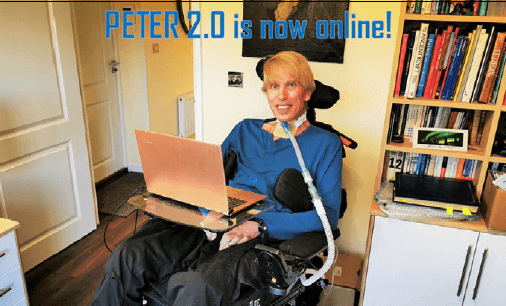 Dr Peter Bowman Scott-Morgan is
an English-American roboticist
suffering from amyotrophic lateral
sclerosis (ALS). This degenerative
condition pushed Scott-Morgan into
a daring approach to counteract it and
become, in his words, the “world’s first
full cyborg”.
The roboticist took to Twitter in
October to announce that he was
undergoing four medical procedures
to improve the quality and length of
his life. He claims that he’s now Peter
2.0. Doctors inserted a feeding tube
directly into his stomach, a catheter
directly into his bladder, and a colostomy
bag into his colon.
He also underwent a laryngectomy,
a procedure where doctors surgically
remove the larynx, the part of your
body that connects the mouth and
nose to the lungs. Without his larynx,
he can no longer talk with his natural
voice, but he also doesn’t risk saliva
accidentally accumulating in his lungs.
He’s now breathing with a respirator.
“Just home from 24 days in Intensive
Care. All medical procedures now
complete and a huge success. My
mini-ventilator keeping me breathing
is a LOT quieter than Darth Vader’s. All
speech is synthetic but at last sounds
like me again. Long research road
ahead but in great spirits,” Scott-Morgan
wrote in a tweet. ...
Dr Peter Bowman Scott-Morgan is
an English-American roboticist
suffering from amyotrophic lateral
sclerosis (ALS). This degenerative
condition pushed Scott-Morgan into
a daring approach to counteract it and
become, in his words, the “world’s first
full cyborg”.
The roboticist took to Twitter in
October to announce that he was
undergoing four medical procedures
to improve the quality and length of
his life. He claims that he’s now Peter
2.0. Doctors inserted a feeding tube
directly into his stomach, a catheter
directly into his bladder, and a colostomy
bag into his colon.
He also underwent a laryngectomy,
a procedure where doctors surgically
remove the larynx, the part of your
body that connects the mouth and
nose to the lungs. Without his larynx,
he can no longer talk with his natural
voice, but he also doesn’t risk saliva
accidentally accumulating in his lungs.
He’s now breathing with a respirator.
“Just home from 24 days in Intensive
Care. All medical procedures now
complete and a huge success. My
mini-ventilator keeping me breathing
is a LOT quieter than Darth Vader’s. All
speech is synthetic but at last sounds
like me again. Long research road
ahead but in great spirits,” Scott-Morgan
wrote in a tweet. ...
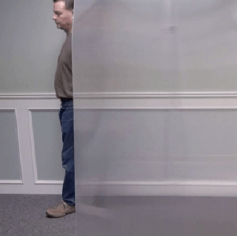 Canadian camouflage company
Hyperstealth Biotechnology
has patented the technology behind
a material that bends light to make
people and objects near invisible to
the naked eye. ...
As well as making objects close to
invisible to the naked eye, the material
also conceals them from infrared and
ultraviolet imagers.
Unlike traditional camouflage materials,
which are limited to specific
conditions such as forests or deserts,
this “invisibility cloak” works in any
environment or season, at any time
of day. This is made possible through
something called a lenticular lens –a
corrugated sheet in which each ridge
is made up of a convex or outwardcurving
lens. ...
Read full text and watch video: https://www.
dezeen.com/2019/11/07/hyperstealth-biotechnology-
quantum-stealth-invisibility-cloak/
Canadian camouflage company
Hyperstealth Biotechnology
has patented the technology behind
a material that bends light to make
people and objects near invisible to
the naked eye. ...
As well as making objects close to
invisible to the naked eye, the material
also conceals them from infrared and
ultraviolet imagers.
Unlike traditional camouflage materials,
which are limited to specific
conditions such as forests or deserts,
this “invisibility cloak” works in any
environment or season, at any time
of day. This is made possible through
something called a lenticular lens –a
corrugated sheet in which each ridge
is made up of a convex or outwardcurving
lens. ...
Read full text and watch video: https://www.
dezeen.com/2019/11/07/hyperstealth-biotechnology-
quantum-stealth-invisibility-cloak/
 Michaela DePrince
was born in Sierra
Leone and grew up in the
United States. Together
with her adoptive mother,
Elaine DePrince, she wrote the
book Taking Flight: From War
Orphan to Star Ballerina. At The
Rock School in Philadelphia, Michaela
specialised in classical ballet.
In 2013, Michaela started her career
in the Netherlands as a member
of the Dutch National Ballet’s
Junior Company, which had just
started up. In August 2014,
she transferred to Dutch
National Ballet, in the rank of
élève. One year later, she was
promoted to coryphée and in 2016
to grand sujet, and then to soloist at
the end of the same year.
Michaela DePrince
was born in Sierra
Leone and grew up in the
United States. Together
with her adoptive mother,
Elaine DePrince, she wrote the
book Taking Flight: From War
Orphan to Star Ballerina. At The
Rock School in Philadelphia, Michaela
specialised in classical ballet.
In 2013, Michaela started her career
in the Netherlands as a member
of the Dutch National Ballet’s
Junior Company, which had just
started up. In August 2014,
she transferred to Dutch
National Ballet, in the rank of
élève. One year later, she was
promoted to coryphée and in 2016
to grand sujet, and then to soloist at
the end of the same year.
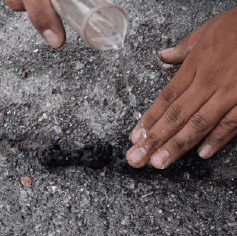 Rain would repair rather than damage
roads if they were made of
the tyre-based pavement invented by
Israel Briseño Carmona, a Mexican
student and winner of the nation's
James Dyson Award.
The Coahuila Autonomous University
student’s rubber pavement is
made of recycled tyres combined with
additives that allow it to self-regenerate
upon contact with water.
Carmona began his research wanting
to solve the problem of rainwater
damage to streets, which manifests as
potholes and cracks.
“Damage is caused by rain filtering
to the base of pavements, weakening
it and creating subsidence,” said the
designer. “This is how the idea that
turning the greatest degradation agent
into a recovery agent was born.” ...
Rain would repair rather than damage
roads if they were made of
the tyre-based pavement invented by
Israel Briseño Carmona, a Mexican
student and winner of the nation's
James Dyson Award.
The Coahuila Autonomous University
student’s rubber pavement is
made of recycled tyres combined with
additives that allow it to self-regenerate
upon contact with water.
Carmona began his research wanting
to solve the problem of rainwater
damage to streets, which manifests as
potholes and cracks.
“Damage is caused by rain filtering
to the base of pavements, weakening
it and creating subsidence,” said the
designer. “This is how the idea that
turning the greatest degradation agent
into a recovery agent was born.” ...
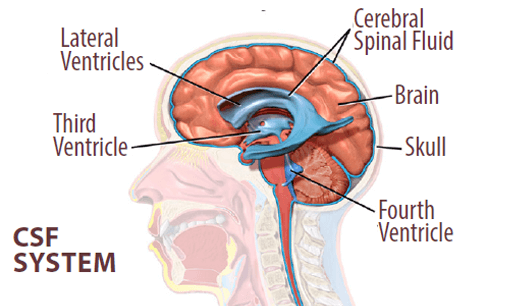 The function of sleep has been
something of a mystery for a long
time. Nearly every creature in the
animal kingdom sleeps in one way or
another, indicating that it’s a highly
important function for survival ... .
However, new research published
in the journal Science may have just
uncovered what’s really going on in our
brains while we dream about being late
for an exam because our teeth fell out.
Our brains may actually be taking a
bath in cerebrospinal fluid (CSF), a watery
substance that washes out all the
gunk that accumulates in our brains
over the course of the day.
Neurons take up a lot of energy.
In fact, the brain alone accounts for
roughly 20% of the body’s total energy
consumption. All of this activity and
fuel-burning also means that the brain
generates a lot of waste. Two varieties
are particularly concerning: beta-amyloid
peptides and tau proteins. Studies
have shown that these waste products
build up into clumps and entangled
nets within the brains of Alzheimer’s
patients, damaging the connections
between neurons.
The brain produces a lot of waste
over the course of a day, and yet we
don’t see people getting ... neurodegenerative
diseases in their 30s. Part of the
reason why is because when we sleep,
our brain takes the trash out. Prior
studies in mice have shown that the
levels of neurotoxic waste products in
the brain drop overnight. ...
Read full text:
The function of sleep has been
something of a mystery for a long
time. Nearly every creature in the
animal kingdom sleeps in one way or
another, indicating that it’s a highly
important function for survival ... .
However, new research published
in the journal Science may have just
uncovered what’s really going on in our
brains while we dream about being late
for an exam because our teeth fell out.
Our brains may actually be taking a
bath in cerebrospinal fluid (CSF), a watery
substance that washes out all the
gunk that accumulates in our brains
over the course of the day.
Neurons take up a lot of energy.
In fact, the brain alone accounts for
roughly 20% of the body’s total energy
consumption. All of this activity and
fuel-burning also means that the brain
generates a lot of waste. Two varieties
are particularly concerning: beta-amyloid
peptides and tau proteins. Studies
have shown that these waste products
build up into clumps and entangled
nets within the brains of Alzheimer’s
patients, damaging the connections
between neurons.
The brain produces a lot of waste
over the course of a day, and yet we
don’t see people getting ... neurodegenerative
diseases in their 30s. Part of the
reason why is because when we sleep,
our brain takes the trash out. Prior
studies in mice have shown that the
levels of neurotoxic waste products in
the brain drop overnight. ...
Read full text:
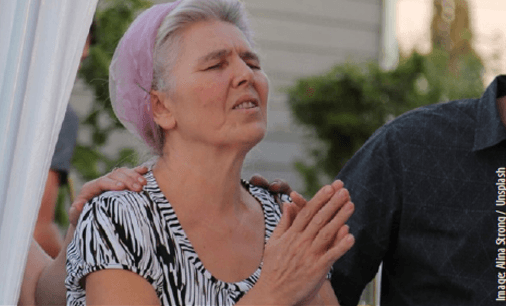 In virtually all countries in the world,
women tend to be more religious
than men. In the USA, recent surveys
show a sizeable 12-point difference between
the genders in terms of religiosity.
What explains the gap?
A new study published in The Journal
for the Scientific Study of Religion
suggests one factor is that men are
more likely to take risks. ...
For the study, John P. Hoffmann,
a professor of sociology at Brigham
Young University, examined data from
the 2015 Monitoring the Future study,
the 2010 National Survey of Drug Use
and Health, and the 2005 National
Survey of Youth and Religion. These
sources recorded the risk preferences,
religiousness and demographic variables
of 22,745 American adolescents. After comparing the data, the results
showed that men were more willing to
take risks, while women were more likely
to be religious. What’s more, the gap
between male and female religiousness
nearly disappeared when risk-taking
served as a control variable. ... Hoffman
cautioned that the study doesn't
prove that risk-taking preferences fully
explain the gap in religiosity between
men and women, and that the study
only focused on young people. ...
As sociologists Omar Lizardo and
Jessica L. Collett once wrote, the religiosity
gender gap is still “a genuine scientific
puzzle.” Most explanations argue
that either nature or nurture is responsible
for the gap. ...
Read full text:
In virtually all countries in the world,
women tend to be more religious
than men. In the USA, recent surveys
show a sizeable 12-point difference between
the genders in terms of religiosity.
What explains the gap?
A new study published in The Journal
for the Scientific Study of Religion
suggests one factor is that men are
more likely to take risks. ...
For the study, John P. Hoffmann,
a professor of sociology at Brigham
Young University, examined data from
the 2015 Monitoring the Future study,
the 2010 National Survey of Drug Use
and Health, and the 2005 National
Survey of Youth and Religion. These
sources recorded the risk preferences,
religiousness and demographic variables
of 22,745 American adolescents. After comparing the data, the results
showed that men were more willing to
take risks, while women were more likely
to be religious. What’s more, the gap
between male and female religiousness
nearly disappeared when risk-taking
served as a control variable. ... Hoffman
cautioned that the study doesn't
prove that risk-taking preferences fully
explain the gap in religiosity between
men and women, and that the study
only focused on young people. ...
As sociologists Omar Lizardo and
Jessica L. Collett once wrote, the religiosity
gender gap is still “a genuine scientific
puzzle.” Most explanations argue
that either nature or nurture is responsible
for the gap. ...
Read full text:
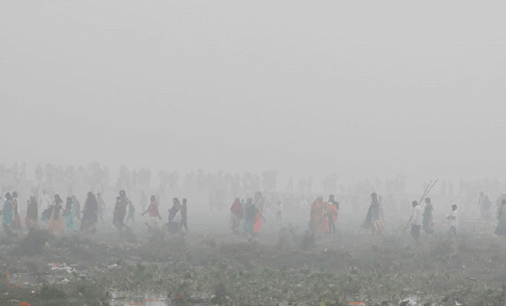
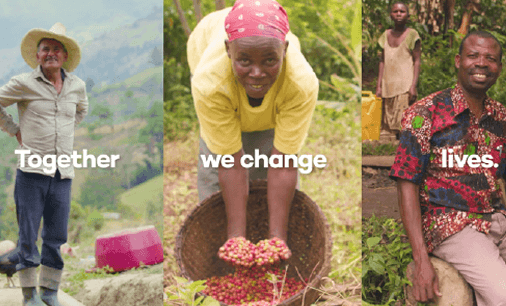 Ecosia is a search engine that donates
the bulk of its expendable
funds to tree-planting organizations
around the globe. ... Ecosia anonymizes
all user data after holding it for four
days (for security purposes) and has
a written agreement with Microsoft
requiring the company to follow the
same practice.
After paying for its operational and
marketing costs, Ecosia invests the rest
in long-term projects and tree-planting
organizations. That’s how, by Ecosia’s
own count, it has planted over 70 million
trees since its founding in 2009. It
also takes a “first, do no harm” approach
by building solar farms that cover the
energy required to operate Ecosia itself.
Ecosia is part of the Microsoft Search
Network, which includes Yahoo, AOL
and DuckDuckGo. ... This partnership
means that an Ecosia search requires
not just its own servers but Microsoft’s
as well, and when it comes to sustainability,
Microsoft is crushed by Google.
Google reached 100 percent carbon
neutrality in 2018, with clean energy
purchases that offset both its data
centers and offices (its actual power still
comes largely from dirty sources, but
it buys an equivalent amount of clean
energy). Microsoft, on the other hand,
states that it is on pace to reach 60
percent carbon neutrality by the end of
2019, and is committed to 70 percent by
2023. ...
Ecosia is a search engine that donates
the bulk of its expendable
funds to tree-planting organizations
around the globe. ... Ecosia anonymizes
all user data after holding it for four
days (for security purposes) and has
a written agreement with Microsoft
requiring the company to follow the
same practice.
After paying for its operational and
marketing costs, Ecosia invests the rest
in long-term projects and tree-planting
organizations. That’s how, by Ecosia’s
own count, it has planted over 70 million
trees since its founding in 2009. It
also takes a “first, do no harm” approach
by building solar farms that cover the
energy required to operate Ecosia itself.
Ecosia is part of the Microsoft Search
Network, which includes Yahoo, AOL
and DuckDuckGo. ... This partnership
means that an Ecosia search requires
not just its own servers but Microsoft’s
as well, and when it comes to sustainability,
Microsoft is crushed by Google.
Google reached 100 percent carbon
neutrality in 2018, with clean energy
purchases that offset both its data
centers and offices (its actual power still
comes largely from dirty sources, but
it buys an equivalent amount of clean
energy). Microsoft, on the other hand,
states that it is on pace to reach 60
percent carbon neutrality by the end of
2019, and is committed to 70 percent by
2023. ...
 The World Health Organization is
hoping to drive down the cost of insulin
by encouraging more generic drug
makers to enter the market. The organization
hopes that by increasing competition
for insulin, drug manufacturers
will be forced to lower their prices.
Currently, only three companies
dominate the world insulin market, Eli
Lilly, Novo Nordisk and Sanofi. Over
the past three decades they’ve worked
to drastically increase the price of the
drug, leading to an insulin availability
crisis in some places.
In the United States, the price of
insulin has increased from $35 usd a
vial to $275 over the past two decades.
“Four hundred million people are living
with diabetes, the amount of insulin
available is too low and the price is too
high, so we really need to do something,”
Emer Cooke, the W.H.O.’s head
of regulation of medicines and health
technologies, said in a statement.
Through a process called “prequalification”
UN agencies, such as Doctors
without Borders, will be able to buy
approved generic versions of insulin.
The W.H.O. used similar tactics to
make HIV/AIDS drugs more affordable.
In 2002, 7,000 Africans were dying
every year ... because Western drug
companies sold the life-saving drugs
for around $15,000 a year. Now the
drugs are made in countries with thriving
generic drug industries and ... cost
only around $75 a year. ... Read full text:
https://www.good.is/who-plan-insulin-affordable
Read full text and watch video:
The World Health Organization is
hoping to drive down the cost of insulin
by encouraging more generic drug
makers to enter the market. The organization
hopes that by increasing competition
for insulin, drug manufacturers
will be forced to lower their prices.
Currently, only three companies
dominate the world insulin market, Eli
Lilly, Novo Nordisk and Sanofi. Over
the past three decades they’ve worked
to drastically increase the price of the
drug, leading to an insulin availability
crisis in some places.
In the United States, the price of
insulin has increased from $35 usd a
vial to $275 over the past two decades.
“Four hundred million people are living
with diabetes, the amount of insulin
available is too low and the price is too
high, so we really need to do something,”
Emer Cooke, the W.H.O.’s head
of regulation of medicines and health
technologies, said in a statement.
Through a process called “prequalification”
UN agencies, such as Doctors
without Borders, will be able to buy
approved generic versions of insulin.
The W.H.O. used similar tactics to
make HIV/AIDS drugs more affordable.
In 2002, 7,000 Africans were dying
every year ... because Western drug
companies sold the life-saving drugs
for around $15,000 a year. Now the
drugs are made in countries with thriving
generic drug industries and ... cost
only around $75 a year. ... Read full text:
https://www.good.is/who-plan-insulin-affordable
Read full text and watch video:
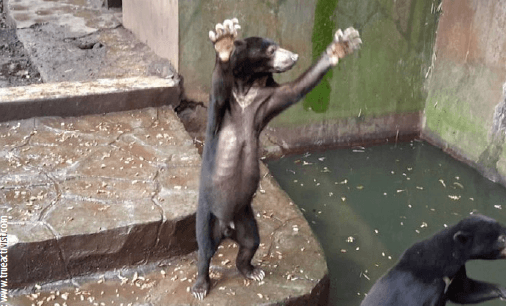 Sometimes rescued wild animals
end up in zoos. But the wild animals
in Indonesia’s zoos are actually
the ones that need rescuing.
It wasn’t too long ago when the
Surabaya Zoo, known by its critics
as the “Zoo of Death” made headlines
across the globe. The park was
reportedly losing 25 of its 4,000 head
menagerie per day and was reeling
from the death of one of its Sumatran
tigers. Another one of their tigers,
Melani, was shown in photos to be so
emaciated that officials were forced
to consider euthanizing her to put her
out of her misery.
That was nearly six years ago, but
it seems like welfare standards for Indonesia’s zoo animals haven’t improved
since then. The public is now
in an uproar about more animals from
various Indonesian zoos that are visibly
suffering, starving or neglected.
According to one Indonesian animal
rights group, 90% of all the zoos in
Indonesia should be shut down. The
organization based its conclusion on
the ability of the assessed zoos to satisfy
five key criteria: keeping animals
free from hunger and thirst, free from
pain and injury, free from discomfort,
free to behave as they would in the
wild and free from stress. ...
Sign the petition:
Sometimes rescued wild animals
end up in zoos. But the wild animals
in Indonesia’s zoos are actually
the ones that need rescuing.
It wasn’t too long ago when the
Surabaya Zoo, known by its critics
as the “Zoo of Death” made headlines
across the globe. The park was
reportedly losing 25 of its 4,000 head
menagerie per day and was reeling
from the death of one of its Sumatran
tigers. Another one of their tigers,
Melani, was shown in photos to be so
emaciated that officials were forced
to consider euthanizing her to put her
out of her misery.
That was nearly six years ago, but
it seems like welfare standards for Indonesia’s zoo animals haven’t improved
since then. The public is now
in an uproar about more animals from
various Indonesian zoos that are visibly
suffering, starving or neglected.
According to one Indonesian animal
rights group, 90% of all the zoos in
Indonesia should be shut down. The
organization based its conclusion on
the ability of the assessed zoos to satisfy
five key criteria: keeping animals
free from hunger and thirst, free from
pain and injury, free from discomfort,
free to behave as they would in the
wild and free from stress. ...
Sign the petition:

 Converts from lounge
chair, to cot, to personal
tent. Comes with rain
fly and carry bag.
Its 2 zippered entrances
and mesh openings can
be closed or opened for
additional air flow.
www.amazon.com
Converts from lounge
chair, to cot, to personal
tent. Comes with rain
fly and carry bag.
Its 2 zippered entrances
and mesh openings can
be closed or opened for
additional air flow.
www.amazon.com
 The Modern sprout plant gift set includes a bamboo pot, plastic
plant stand and tray, plant food, a special growing medium made from recycled
glass and coconut husks, and a polypropylene wick. Available in lavender or basil.
store.moma.org
The Modern sprout plant gift set includes a bamboo pot, plastic
plant stand and tray, plant food, a special growing medium made from recycled
glass and coconut husks, and a polypropylene wick. Available in lavender or basil.
store.moma.org
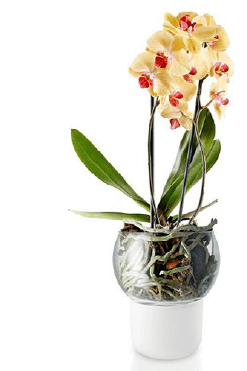
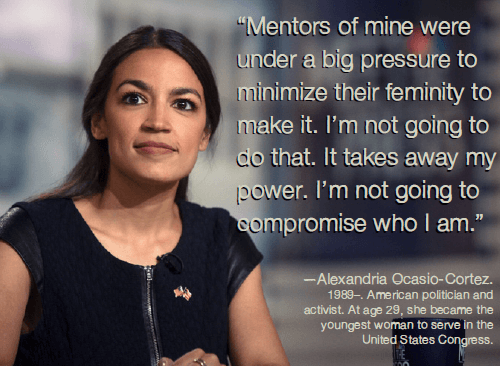 “Mentors of mine were
under a big pressure to
minimize their feminity to
make it. I’m not going to
do that. It takes away my
power. I’m not going to
compromise who I am.”
“Mentors of mine were
under a big pressure to
minimize their feminity to
make it. I’m not going to
do that. It takes away my
power. I’m not going to
compromise who I am.”
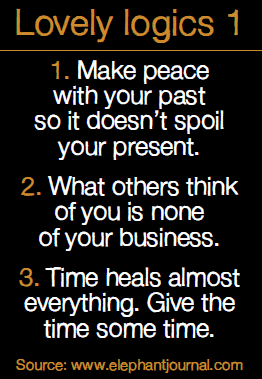 1. Make peace
with your past
so it doesn’t spoil
your present.
2. What others think
of you is none
of your business.
3. Time heals almost
everything. Give the
time some time.
Source: www.elephantjournal.com
1. Make peace
with your past
so it doesn’t spoil
your present.
2. What others think
of you is none
of your business.
3. Time heals almost
everything. Give the
time some time.
Source: www.elephantjournal.com
 The Bachelor of Democratic Studies
program is offered online via
distance learning. After evaluating
both academic record and life experience,
AIU staff working in conjunction
with Faculty and Academic Advisors
will assist students in setting
up a custom-made program, designed
on an individual basis. This flexibility
to meet student needs is seldom
found in other distance learning programs.
Our online program does not
require all students to take the same
subjects/courses, use the same books,
or learning materials. Instead, the online
Bachelor of Democratic Studies
curriculum is designed individually
by the student and academic advisor.
It specifically addresses strengths and
weaknesses with respect to market
opportunities in the student’s major
and intended field of work.
Understanding that industry and
geographic factors should influence
the content of the curriculum instead
of a standardized one-fits-all design is
the hallmark of AIU’s unique approach
to adult education. This philosophy
addresses the dynamic and constantly
changing environment of working
professionals by helping adult students
in reaching their professional
and personal goals within the scope of
the degree program.
The Bachelor of Democratic Studies
program is offered online via
distance learning. After evaluating
both academic record and life experience,
AIU staff working in conjunction
with Faculty and Academic Advisors
will assist students in setting
up a custom-made program, designed
on an individual basis. This flexibility
to meet student needs is seldom
found in other distance learning programs.
Our online program does not
require all students to take the same
subjects/courses, use the same books,
or learning materials. Instead, the online
Bachelor of Democratic Studies
curriculum is designed individually
by the student and academic advisor.
It specifically addresses strengths and
weaknesses with respect to market
opportunities in the student’s major
and intended field of work.
Understanding that industry and
geographic factors should influence
the content of the curriculum instead
of a standardized one-fits-all design is
the hallmark of AIU’s unique approach
to adult education. This philosophy
addresses the dynamic and constantly
changing environment of working
professionals by helping adult students
in reaching their professional
and personal goals within the scope of
the degree program.
 Atlantic International University is accredited by the Accreditation Service for International
Schools, Colleges and Universities (ASIC). ASIC Accreditation is an internationally
renowned quality standard for colleges and universities. Visit ASIC’s Directory of Accredited
Colleges and Universities. ASIC is a member of CHEA International Quality Group
(CIQG) in the USA, an approved accreditation body by the Ministerial Department of the Home Office
in the UK, and is listed in the International Directory of the Council for Higher Education Accreditation
(CHEA). The University is based in the United States and was established by corporate charter in 1998.
Atlantic International University is accredited by the Accreditation Service for International
Schools, Colleges and Universities (ASIC). ASIC Accreditation is an internationally
renowned quality standard for colleges and universities. Visit ASIC’s Directory of Accredited
Colleges and Universities. ASIC is a member of CHEA International Quality Group
(CIQG) in the USA, an approved accreditation body by the Ministerial Department of the Home Office
in the UK, and is listed in the International Directory of the Council for Higher Education Accreditation
(CHEA). The University is based in the United States and was established by corporate charter in 1998.
 In some cases, accredited colleges
may not accept for transfer courses and degrees
completed at unaccredited colleges, and some
employers may require an accredited degree as
a basis for eligibility for employment. Potential
students should consider how the above may affect
their interests, AIU respects the unique rules and
regulations of each country and does not seek to
influence the respective authorities. In the event
that a prospective student wishes to carry out any
government review or process in regards to his
university degree, we recommend that the requirements
of such are explored in detail with the relevant
authorities by the prospective student as the
university does not intervene in such processes.
AIU students can be found in over 180 countries,
they actively participate and volunteer
in their communities as part of their academic
program and have allocated thousands of service
hours to diverse causes and initiatives. AIU
programs follow the standards commonly used by
colleges and universities in the United States with
regards to the following: academic program
structure, degree issued, transcript, and
other graduation documents.
AIU graduation documents can include
an apostille and authentication from the
US Department of State to facilitate their
use internationally.
In some cases, accredited colleges
may not accept for transfer courses and degrees
completed at unaccredited colleges, and some
employers may require an accredited degree as
a basis for eligibility for employment. Potential
students should consider how the above may affect
their interests, AIU respects the unique rules and
regulations of each country and does not seek to
influence the respective authorities. In the event
that a prospective student wishes to carry out any
government review or process in regards to his
university degree, we recommend that the requirements
of such are explored in detail with the relevant
authorities by the prospective student as the
university does not intervene in such processes.
AIU students can be found in over 180 countries,
they actively participate and volunteer
in their communities as part of their academic
program and have allocated thousands of service
hours to diverse causes and initiatives. AIU
programs follow the standards commonly used by
colleges and universities in the United States with
regards to the following: academic program
structure, degree issued, transcript, and
other graduation documents.
AIU graduation documents can include
an apostille and authentication from the
US Department of State to facilitate their
use internationally.
 The School of Business and Economics
allows aspiring and practicing
professionals, managers, and entrepreneurs
in the private and public sectors
to complete a self paced distance
learning degree program of the highest
academic standard.
The ultimate goal is to empower
learners and help them take advantage
of the enormous array of resources
from the world environment in order
to eliminate the current continuum of
poverty and limitations.
Degree programs are designed for
those students whose professional experience has been in business,
marketing, administration, economics,
finance and management.
The School of Business and Economics
allows aspiring and practicing
professionals, managers, and entrepreneurs
in the private and public sectors
to complete a self paced distance
learning degree program of the highest
academic standard.
The ultimate goal is to empower
learners and help them take advantage
of the enormous array of resources
from the world environment in order
to eliminate the current continuum of
poverty and limitations.
Degree programs are designed for
those students whose professional experience has been in business,
marketing, administration, economics,
finance and management.
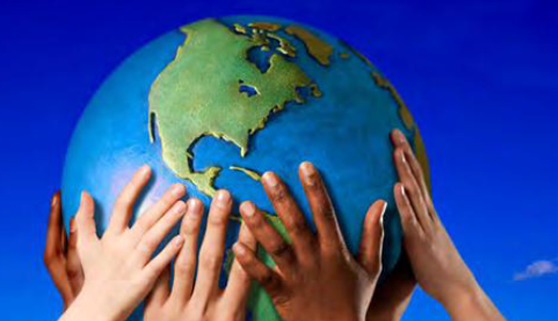 The School of Social and Human Studies
is focused on to the development of
studies which instill a core commitment
to building a society based on social and
economic justice and enhancing opportunities
for human well being.
The founding principles lie on the
basic right of education as outlined
in the Declaration of Human Rights.
We instill in our students a sense of
confidence and self reliance in their
ability to access the vast opportunities
available through information channels,
the world wide web, private, public,
nonprofit, and nongovernmental organizations in an ever expanding
global community.
Degree programs are aimed towards
those whose professional life has been
related to social and human behavior,
with the arts, or with cultural studies.
The School of Social and Human Studies
is focused on to the development of
studies which instill a core commitment
to building a society based on social and
economic justice and enhancing opportunities
for human well being.
The founding principles lie on the
basic right of education as outlined
in the Declaration of Human Rights.
We instill in our students a sense of
confidence and self reliance in their
ability to access the vast opportunities
available through information channels,
the world wide web, private, public,
nonprofit, and nongovernmental organizations in an ever expanding
global community.
Degree programs are aimed towards
those whose professional life has been
related to social and human behavior,
with the arts, or with cultural studies.
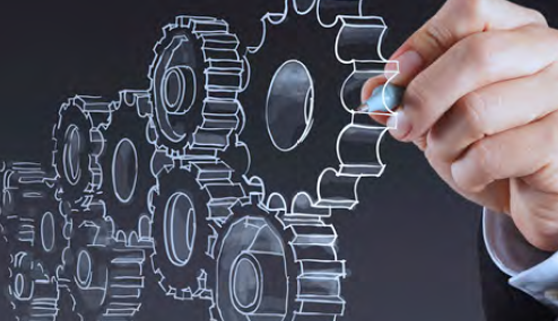 The School of Science and Engineering
seeks to provide dynamic, integrated,
and challenging degree programs
designed for those whose experience
is in industrial research, scientific production,
engineering and the general
sciences. Our system for research and
education will keep us apace with the
twenty-first century reach scientific
advance in an environmentally and
ecologically responsible manner to allow
for the sustainability of the human
population. We will foster among our
students a demand for ethical behavior,
an appreciation for diversity, an understanding
of scientific investigation, knowledge of design innovation, a
critical appreciation for the importance
of technology and technological change
for the advancement of humanity.
The School of Science and Engineering
seeks to provide dynamic, integrated,
and challenging degree programs
designed for those whose experience
is in industrial research, scientific production,
engineering and the general
sciences. Our system for research and
education will keep us apace with the
twenty-first century reach scientific
advance in an environmentally and
ecologically responsible manner to allow
for the sustainability of the human
population. We will foster among our
students a demand for ethical behavior,
an appreciation for diversity, an understanding
of scientific investigation, knowledge of design innovation, a
critical appreciation for the importance
of technology and technological change
for the advancement of humanity.
 With access to a global catalog created and maintained collectively by more than
9,000 participating institutions, AIU students have secured excellent research
tools for their study programs.
With access to a global catalog created and maintained collectively by more than
9,000 participating institutions, AIU students have secured excellent research
tools for their study programs.